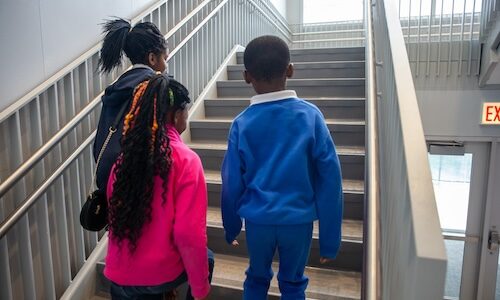Education can feel like a sea of buzz words, including terms like “personalized learning,” “differentiation,” “formative assessment,” and “culturally responsive teaching.” These instructional trends can take off while the terms often mean very different things to different people.
The trouble with many terms but few clear definitions can be, unsurprisingly, confusion. And whenever confusion appears, ineffectiveness can sometimes be close behind.
“Culturally responsive and sustaining education” is one of those terms. It’s a critical term that focuses on one of the most important things in education: ensuring we’re meeting the needs of all students. Equity is much easier to accomplish when we understand and know how to embrace differences.
I’d like to dig into what, exactly, “culturally responsive and sustaining education” is, why it matters, and how you can work toward it in your school or district so you can achieve your goals of equity for all.
What is “culturally responsive and sustaining education”?
Geneva Gay, of the University of Washington, defines the first half of the term—”culturally responsive”—in her book Culturally responsive teaching: Theory, research, and practice: “Culturally responsive teaching is a means for unleashing the higher learning potentials of ethnically diverse students by simultaneously cultivating their academic and psychosocial abilities.” In other words, culturally responsive teaching considers students’ culture to be an asset to their learning and embraces it in the classroom.
You might be wondering, then, what “culturally sustaining” means. In “Culturally sustaining pedagogy: A needed change in stance, terminology, and practice,” Django Paris, of Michigan State, challenges educators to consider expanding the idea of culturally responsive teaching to account for multiple and shifting student identities. Examples include students’ gender, sexuality, immigration status, and linguistic identities. You can read a more detailed definition in his 2017 interview with EdWeek.
Why does education need to be culturally responsive and culturally sustaining?
The short answer to this question is that culturally responsive and sustaining education helps students by improving outcomes including achievement and well-being. It has been shown to help with student engagement, attendance, grades, graduation rates, and civic participation.
The longer answer is this: People often discuss the disconcerting achievement gap between white students and students of color, in particular Black and Hispanic students. Yet the term “achievement gap” alone isn’t doing enough to acknowledge systemic inequities and effectively begin to address them. In fact, it places undue burden for learning on students: it is they who aren’t achieving enough, versus we who aren’t giving them enough opportunities to succeed.
In The opportunity myth, The New Teacher Project (TNTP) suggests we shift the cause of the problem (the students, as the achievement gap implies) to the resources and opportunities that are offered to students (as the term “opportunity gap” stresses). While traditional education maintains the status quo, culturally responsive and sustaining education offers a method to close the opportunity gap by asking that educators hold high expectations for all students and put the onus on the adults. When implementing culturally responsive and sustaining education, schools must ensure all students have access to supports for success.
How do we make culturally responsive and sustaining practices part of a school?
Guidance on culturally responsive and sustaining practices is becoming easier to find. The free resource “Transforming our public schools,” for example, offers helpful advice on curriculum, school climate, community engagement, and more. Gloria Ladson-Billings, formerly of the University of Wisconsin–Madison, also outlines some of the main things educators can do to incorporate culturally responsive and sustaining practices in her book The dreamkeepers: Successful teachers of African American children:
- Encourage relationships between students and teachers
- Create a collaborative learning environment
- Leverage students’ strengths
- Connect learning to students’ interests and goals
This list may sound daunting, but remember, a journey of a thousand miles begins with a single step. What’s important is not to get so overwhelmed that you delay starting. Instead, act now in whatever way you can. Here are some potential next steps.
Suggestions for school administrators
- Revisit your language policy to ensure your school is offering appropriate translation for families
- Check that you have some family events held outside of school hours to allow working families to attend
- Assess whether your student dress code welcomes different hairstyles and expressions of self
Suggestions for teachers
- Start your next unit by assessing what students already know and what they would like to know
- Choose a student in class that you feel disconnected from and dedicate time to getting to know them better
Big-picture planning
Every school and district has a different context, so we encourage you to use the ideas in this post as a springboard and consider what you can start doing tomorrow, however small. NWEA is committed to supporting schools in their journey toward equitable education. To find out more about how we can support you with culturally responsive and sustaining education, visit NWEA.org/school-improvement.









